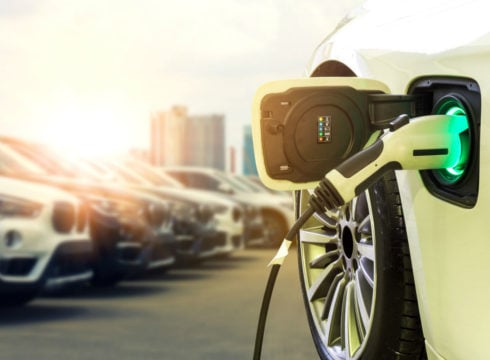SUMMARY
The Indian government issued revised guidelines for FAME II on April 29
The guidelines include manufacturers of electric and hybrid vehicles
The move is aimed at localising production of electric vehicle parts in India
Inc42 Daily Brief
Stay Ahead With Daily News & Analysis on India’s Tech & Startup Economy
Amidst the debate between the government and electric vehicle manufacturers over EV parts localisation norms, the Indian Department of Heavy Industries has notified that control units, chargers and AC (alternating current) units are some of the electric and hybrid vehicle components which must be built locally to qualify for government subsidies.
The central government issued revised guidelines for the second phase of Faster Adoption and Manufacturing of (Hybrid &) Electric Vehicles scheme (FAME) on April 29. These revised guidelines included the list of EV components which will be eligible for subsidies along with the specific deadlines to comply with localisation norms.
The guidelines issued by the department include manufacturers of electric and hybrid two-wheelers, three-wheelers, rickshaws, four-wheelers, and electric buses.
The latest circular states that the electric vehicle manufacturers have to localise the production of traction battery packs by July 2019 in order to claim FAME II incentives. Electric vehicle batteries are also known as traction battery packs and are used to power electric vehicles.
Why Is Localising EV Parts A Concern For OEMs?
In order to ensure greater adaptation of electric vehicles, the central government had launched the second phase of EV policy, FAME in March, with an outlay of INR 10K Cr ($1.4 Bn) to be invested over a period of three years.
Under FAME II, the government proposes to support 10 lakh two-wheelers, 5 lakh three-wheelers, 55K four-wheelers, and 7K buses, that have lithium-ion batteries or newer technology batteries. It has also proposed to set up 2.7K charging stations, with the availability of at least one charging station in a grid of 3Kmx3Km.
The scheme had also aimed to localise the production of electric vehicles so as to bring down the production costs by reducing imports of electric vehicle parts. However, this mandate is a major concern among electric vehicle manufacturers.
India is at a nascent stage in the electric vehicle industry. In a letter to NITI Aayog, industry body Society Of Manufacturers of Electric Vehicle (SMEV) highlighted that component suppliers are not yet ready to manufacture components for the current low volume of EV. Further, the process of safety tests, checking, vehicle testing will take at least 1-1.5 years. Thus it is a wrong move to link incentives with localisation.
In March, it was reported that India imports ten times more auto components from China as compared to its exports. India is expected to rely more on China for getting its EV parts due to lack of native component suppliers. Also, the increased imports of auto components from China may increase India’s huge trade deficit with the country in the next few years.
Vineet J Mehra, founder of DOT, an electric vehicle logistics startup had said in a conversation with Inc42, “It (FAME II) is a good policy and there is a big push from the government to Indianise and make things local which I completely support as it reduces cost and makes it easy to create an EV ecosystem. But I think, you cannot release a policy on March 29 and implement it from April 1. Localisation is bit difficult because we are truly aware of the motor power trained battery technologies are nascent in India,” said Mehra.
Note: We at Inc42 take our ethics very seriously. More information about it can be found here.


